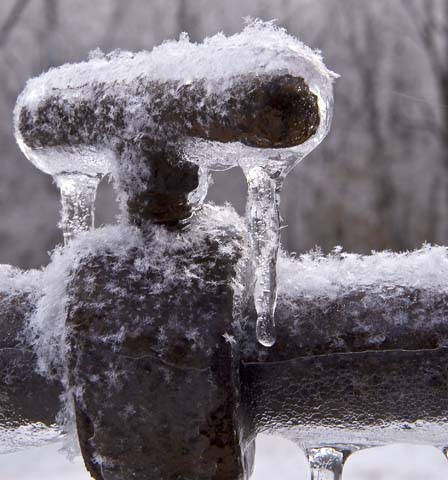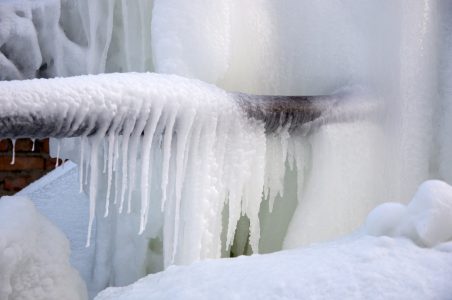Everybody seems to have their unique rationale when it comes to 6 Ways to Prevent Frozen Pipes.

Cold weather can damage your plumbing, particularly by freezing pipes. Right here's how to stop it from happening and what to do if it does.
Intro
As temperatures drop, the risk of icy pipelines rises, potentially leading to costly repairs and water damage. Comprehending exactly how to avoid frozen pipes is essential for property owners in chilly climates.
Comprehending Frozen Pipelines
What causes pipelines to ice up?
Pipes freeze when exposed to temperature levels listed below 32 ° F (0 ° C) for prolonged periods. As water inside the pipes freezes, it expands, putting pressure on the pipeline wall surfaces and potentially causing them to break.
Dangers and damages
Icy pipes can result in supply of water disturbances, property damage, and pricey repair work. Ruptured pipes can flooding homes and create comprehensive architectural damage.
Indications of Frozen Pipes
Determining icy pipelines early can prevent them from rupturing.
Just how to identify icy pipes
Search for lowered water circulation from faucets, uncommon odors or noises from pipelines, and visible frost on exposed pipes.
Prevention Tips
Insulating at risk pipes
Cover pipes in insulation sleeves or utilize warmth tape to safeguard them from freezing temperature levels. Concentrate on pipes in unheated or outside locations of the home.
Home heating techniques
Keep interior areas sufficiently warmed, especially areas with plumbing. Open cupboard doors to enable cozy air to flow around pipelines under sinks.
Shielding Exterior Pipes
Garden hose pipes and outside faucets
Detach and drain pipes garden hose pipes before winter. Install frost-proof faucets or cover outside faucets with shielded caps.
What to Do If Your Pipelines Freeze
Immediate actions to take
If you think frozen pipelines, keep taps open up to eliminate pressure as the ice melts. Use a hairdryer or towels taken in hot water to thaw pipes gradually.
Long-Term Solutions
Structural changes
Think about rerouting pipelines away from outside wall surfaces or unheated areas. Include extra insulation to attic rooms, cellars, and crawl spaces.
Upgrading insulation
Buy premium insulation for pipelines, attics, and wall surfaces. Proper insulation assists keep consistent temperatures and reduces the threat of icy pipes.
Final thought
Protecting against frozen pipelines needs proactive actions and fast feedbacks. By comprehending the reasons, signs, and preventive measures, homeowners can protect their pipes throughout cold weather.
5 Ways to Prevent Frozen Pipes
Drain Outdoor Faucets and Disconnect Hoses
First, close the shut-off valve that controls the flow of water in the pipe to your outdoor faucet. Then, head outside to disconnect and drain your hose and open the outdoor faucet to allow the water to completely drain out of the line. Turn off the faucet when done. Finally, head back to the shut-off valve and drain the remaining water inside the pipe into a bucket or container. Additionally, if you have a home irrigation system, you should consider hiring an expert to clear the system of water each year.
Insulate Pipes
One of the best and most cost-effective methods for preventing frozen water pipes is to wrap your pipes with insulation. This is especially important for areas in your home that aren’t exposed to heat, such as an attic. We suggest using foam sleeves, which can typically be found at your local hardware store.
Keep Heat Running at 65
Your pipes are located inside your walls, and the temperature there is much colder than the rest of the house. To prevent your pipes from freezing, The Insurance Information Institute suggests that you keep your home heated to at least 65 degrees, even when traveling. You may want to invest in smart devices that can keep an eye on the temperature in your home while you’re away.
Leave Water Dripping
Moving water — even a small trickle — can prevent ice from forming inside your pipes. When freezing temps are imminent, start a drip of water from all faucets that serve exposed pipes. Leaving a few faucets running will also help relieve pressure inside the pipes and help prevent a rupture if the water inside freezes.
Open Cupboard Doors
Warm your kitchen and bathroom pipes by opening cupboards and vanities. You should also leave your interior doors ajar to help warm air circulate evenly throughout your home.

We had been brought to that editorial about Preventing and dealing with frozen pipes through a good friend on another site. Appreciated our piece? Please share it. Let another person discover it. We recognize the value of reading our article about Winter Plumbing Precautions: Preventing Frozen Pipes.
Visit Our Website
Comments on “Important Tips for Avoiding Frozen Pipes in Cold Weather Seasons”